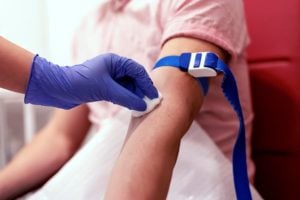By definition, phlebotomy involves drawing blood from a patient’s circulatory system for analysis and diagnosis of any medical conditions or blood disorders. It is also involved in a number of procedures and treatments, which is why it’s so important for healthcare professionals to be proficient in phlebotomy. Here’s a closer look at some of the phlebotomy procedures that require this area of expertise, which you can prepare for during your time at Prism Career Institute.
Venipuncture
The most common of phlebotomy procedures is the venipuncture treatment, in which a needle is utilized to collect blood from a vein. It’s also involved with intravenous (IV) treatments when a vein is punctured to deliver medications to the patient, as well as blood transfusions.
Though a routine practice, it requires a knowledgeable and skillful phlebotomist, as the procedure is actually quite complex. This is because the site at which the venipuncture selection will take place must be chosen carefully, as areas with conditions like scars or hematoma won’t yield a satisfactory sample. Veins of the arm or hand are used most frequently for venipuncture procedures, with foot veins being reserved for situations where other veins can’t be easily accessed.
It’s also essential to understand that since phlebotomists are exposed to blood-borne pathogens, the proper level of protective equipment must be worn depending on the situation. In addition, they must know what to do should a blood spill occur.
Hemochromatosis Treatment
Aside from routine blood tests and IV treatments, phlebotomy procedures are also utilized in the treatment of a number of conditions. One of those is hemochromatosis, which occurs when the body absorbs too much iron from one’s diet. Though iron is essential in the right amounts, excess iron winds up being stored in the heart, pancreas, liver, and other major organs, resulting in potentially life-threatening conditions like diabetes, heart issues, and liver disease.
Therapeutic phlebotomy is considered to be the most effective treatment for this condition. One unit of blood is withdrawn from a patient’s veins typically once every one to two weeks, which eliminates 250 mg of iron from their body. Thanks to the treatment’s success, patients quickly see improvements and are able to decrease their frequency of receiving therapeutic phlebotomy from weekly or biweekly to once every two or three months. They also reap the following benefits:
- Reduced risk of developing liver cirrhosis and/or liver cancer
- Improved heart and liver function
- Relief from symptoms of hemochromatosis, including fatigue, weakness, and joint pain
Other Forms of Therapeutic Phlebotomy
While venipunctures and hemochromatosis treatments are the among the most common phlebotomy procedures, there is a vast array of clinical applications in which therapeutic phlebotomy has been proven effective. Some of the other conditions it can treat include:
- Polycythemia vera – This involves the presence of increased bone marrow that causes thicker blood and can be treated with regular blood draws to prevent clotting.
- Sickle cell disease – Affecting red blood cells, therapeutic phlebotomy can reduce the blood’s viscosity and prevent the concentration of too many misshapen or broken-down red blood cells in one spot.
- Porphyria – When one has too much porphyrin in their blood, therapeutic phlebotomy can remove excess amounts and keep symptoms under control.
How to Become Qualified
Phlebotomy procedures are currently making a difference in the lives of countless patients all over the world, and with the right training from Prism Career Institute, you can contribute to making a positive impact as well. With campuses in Cherry Hill and West Atlantic City, our practical nursing and medical assistant programs will equip you with the skills to succeed in this field. For more information, contact Prism Career Institute today.

